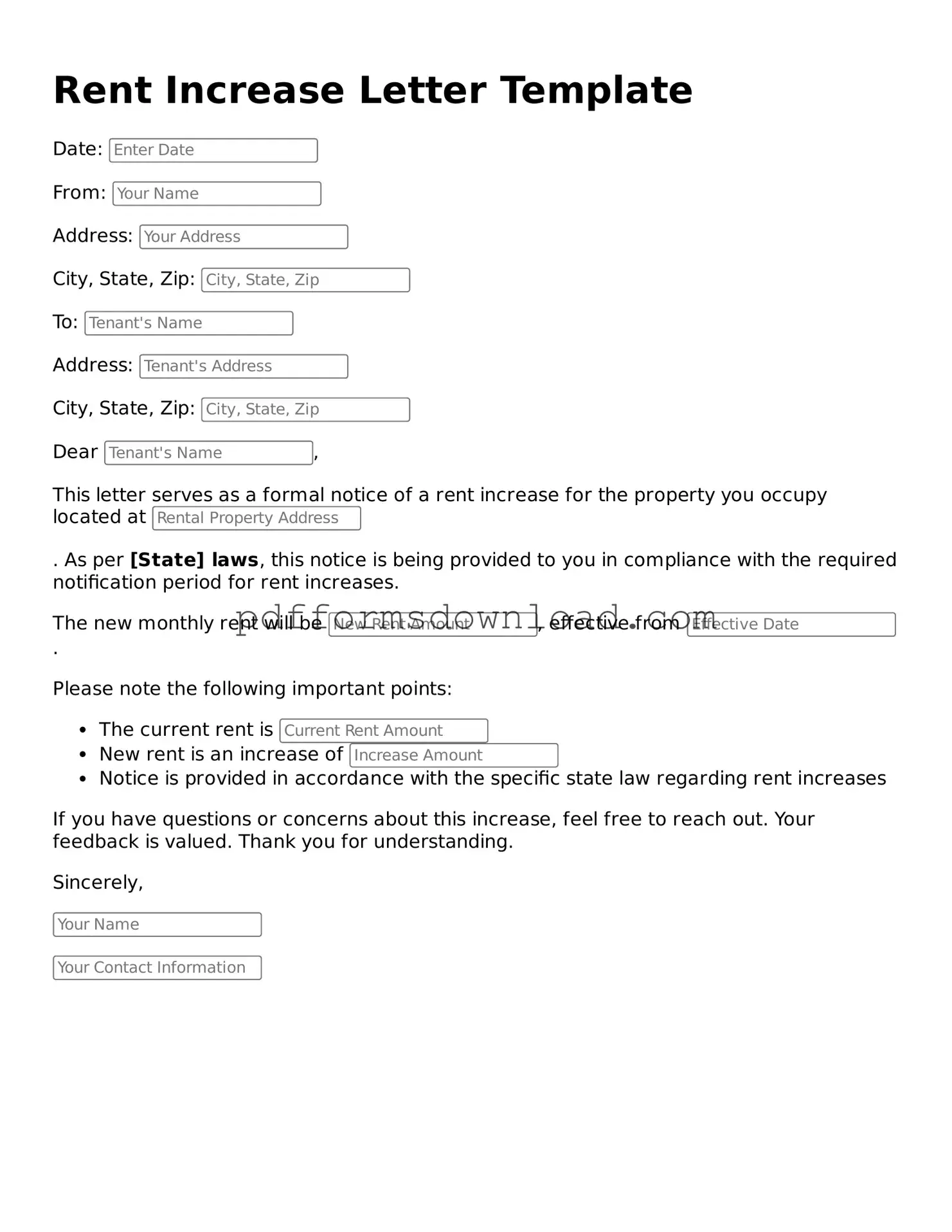What is a Rent Increase Letter?
A Rent Increase Letter is a formal document sent by a landlord to inform tenants about an upcoming increase in their rent. This letter outlines the new rental amount, the reason for the increase, and the effective date. It serves as a legal notice to ensure that tenants are aware of the changes to their rental agreement.
When should I send a Rent Increase Letter?
Timing is crucial. It is generally advisable to send the Rent Increase Letter well in advance of the effective date. Many states require landlords to provide notice anywhere from 30 to 90 days before the increase takes effect. Check local laws to ensure compliance.
What information should be included in the letter?
The letter should include the current rent amount, the new rent amount, the effective date of the increase, and any applicable reasons for the change. Additionally, it should contain the landlord's contact information and any instructions for the tenant regarding the new payment terms.
Can I increase rent without a Rent Increase Letter?
Generally, no. Most states require landlords to provide written notice of a rent increase. Failing to do so can lead to disputes and legal issues. It is best to follow the proper procedure to maintain a good relationship with tenants and to comply with the law.
What if a tenant refuses to pay the increased rent?
If a tenant refuses to pay the increased rent, the landlord may need to address the situation carefully. Open communication is key. Discuss the reasons for the increase and try to reach a mutually agreeable solution. If necessary, legal action may be considered, but this should be a last resort.
Is there a limit to how much I can increase rent?
Yes, many states have regulations that limit how much a landlord can increase rent within a specific time frame. These laws vary widely, so it's essential to research your local regulations to ensure that any proposed increase complies with state and local laws.
Do I need to provide a reason for the rent increase?
While it is not always legally required to provide a reason for a rent increase, doing so can foster goodwill and understanding between landlords and tenants. Transparency helps maintain a positive relationship and can reduce potential conflicts.
Can tenants contest a rent increase?
Yes, tenants can contest a rent increase if they believe it is unjust or not compliant with local laws. They may raise their concerns with the landlord or file a complaint with local housing authorities. It’s advisable for both parties to communicate openly to resolve any disputes amicably.
What should I do if I need to increase rent frequently?
Frequent rent increases can lead to tenant turnover and dissatisfaction. Consider evaluating your rental pricing strategy and market conditions. If necessary, consult with a property management professional to develop a sustainable approach to rent increases that balances profitability with tenant retention.
